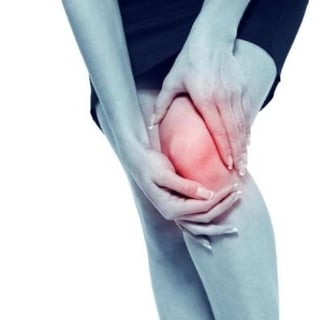Frequently Asked Questions About Bone Deformities Answered By Orthopedic Specialists

A bone deformity includes any abnormality that occurs in the normal alignment. This may occur within the bone or even at the level of the joint. There are many types of bone deformities. It is common to see more than one deformity component in the same person.
 There are also many reasons why a bone is deformed. Orthopedic specialists are physicians specifically trained to diagnose and treat bone deformities. If you or someone you know have questions about treatments for a bone deformity - it is an orthopedist you should consult with.
There are also many reasons why a bone is deformed. Orthopedic specialists are physicians specifically trained to diagnose and treat bone deformities. If you or someone you know have questions about treatments for a bone deformity - it is an orthopedist you should consult with.
As you contemplate seeking advice from orthopedic specialists, you may want a few questions answered before your first visit.
1. What are the causes of bone deformities?
Bone deformities of the limbs can occur for several reasons - some of which are as follows:
- Arthritic diseases
- Cerebral palsy
- Congenital disorders
- Disruption to the growth plate
- Improperly healed fractures
Arthritis. Arthritis, (especially rheumatoid) can decrease the range of motion of the joints, causing pain and stiffness. Not only can it cause discomfort, but also deformity. This deformity is not always limited to the joints, but weight bearing bones. Left untreated, this can cause of bowing of the legs and other serious deformities. Surgery to fuse and stabilize arthritic joints may be an option recommended by your orthopedic surgeon.
Cerebral palsy. Conditions such as cerebral palsy may be the cause of bone deformities and cause pain and stiffness. One leg may be longer than the other, and there may be a low bone density as well. The spasticity of muscles caused by this cerebral palsy has a progressive effect on the person's ankles, leg and hip bones and joints.
Congenital abnormalities. A common cause of bone deformity is related to congenital anomalies. Abnormalities of the foot, hip and legs may not be noticeable at birth. These deformities are usually more noticeable when the child is ready to walk. The result may be bowed legs or the legs and/or feet may turn inward.
Growth plate. When the growth plate or growth centers of the bones are interrupted by overuse or injury, the bone can stop growing altogether. The knee, foot and hip are most often affected.
Bone fractures. When a bone is broken or fractured - it must be held firmly in the proper position in order for it to heal. Improper alignment of a fracture can cause the bone to be deformed.
2. Can bone deformities be treated by orthopedic specialists?
 Yes. If you or someone you know has a bone deformity - there are many questions that will come to mind when thinking about having treatment. All of your questions can be answered by an orthopedic specialist.
Yes. If you or someone you know has a bone deformity - there are many questions that will come to mind when thinking about having treatment. All of your questions can be answered by an orthopedic specialist.
When you consult with a specialist, they will want to review your medical history and perform a physical exam. They will be able to tell you if you are a suitable candidate for treatment and the type of treatment that will give you the most benefit.
Treatments and/or procedures recommended and performed by the orthopedic specialist enable those with bone deformities enjoy activities they have not been able to perform before the treatment.
3. What type of treatments can correct a bone deformity?
Depending on the type of problem, gradual correction of the deformity is performed. This can be done using a surgical technique called an osteotomy (making a small surgical cut). During this procedure, the bone is straightened and gradually pulled apart so that new bone and tissue can grow.
Not all extremity deformities require surgical intervention. There are conservative treatments that may be recommended by your orthopedic specialist. These procedures and treatments recommended by orthopedic specialists may involve physical therapy or orthopedic devices such as bracing.
An orthopedic specialist will be able to determine what type of treatment - surgical or conservative will be best for your type of bone deformity.
4. Where are procedures performed?
Most surgical procedures to correct bone deformities are performed in a hospital setting under general anesthetic. Depending on the type of deformity and each individual, a hospital stay of two or three days is the norm.
5. What about the pain?
If surgery is recommended, you may experience some discomfort. Any discomfort or pain you have will be managed with medications.
6. What happens when after hospital discharge?
When it is time for you to be discharged from the hospital, you will receive detailed discharge and recovery instructions. You will have full instructions on physical therapy, nutrition and activities.
It will be important that you follow the instructions carefully for the best and fastest recovery.
Orthopedic specialists understand all types of bone deformities - as well as their cause. Have you or someone you know been suffering from a bone deformity? Has it hindered the person from taking part in the joys of daily living? If the answer is yes, it is time that you seek the advice of an orthopedic specialist.

